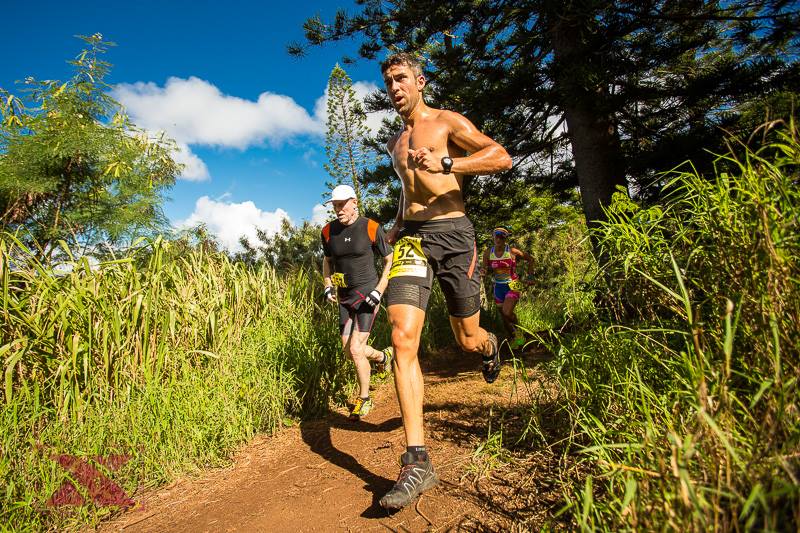5 Reasons To Try Trail Running

Photo: XTERRA
Gain new fitness and have some serious fun by taking to the trails.
Whether you’re going for a run in your local wooded park or negotiating rugged single-track in the mountains, trail running is distinctly different from running the roads, treadmill or track. If you’ve never given trail running a try, now’s the time. Here are some reasons you should head out into the wild, with some tips to get you started.
Long, uninterrupted runs. For a long base or endurance run, nothing beats a stretch of trail. No traffic lights, no intersections and long sections of trail all create a continuous aerobic session. Without the distractions that come with road running, you can easily get into a groove, paying attention to your body, breathing and running efficiency.
Softer surfaces. Training as much as you can on softer surfaces can help prevent injuries and allow faster recovery for your next workout.
Natural fartlek. A hilly trail run will create much greater variations in heart rate than a flat run. This natural fartlek offers a nice mental break from structured intervals, but also builds your endurance threshold and mental strength, not to mention your prowess as an uphill bunny.
Agility and focus. Running on trails requires focus and concentration, especially on single-track or uneven terrain. Paying attention to the way your body moves and works makes you a stronger runner. (Plus, successful rock hopping makes you feel young and sprightly!)
Strengthening the stabilizing muscles. There is more lateral motion involved in trail running, with the body having to use the stabilizer muscles and tendons of the ankles, lower legs and core for balance. When added to your overall training program, this type of running gives you well-rounded, functional strength.
RELATED: Lesley Paterson’s 12 Trail Running Tips
Before you head into the wild …
•Urban trails and parks are a great place to start; they are generally well maintained. Start with one or two shorter base runs a week to get used to the feeling of running on uneven ground—like any new activity, a little restraint at first goes a long way in preventing injury.
• While some trails are marked with distance so you can keep track of your mileage, doing a timed out-and-back loop will ensure you don’t end up on an epic two-hour adventure run on your first time out. A GPS comes in handy in the woods, as you can keep track of your mileage and pace where there are no markers for reference. As you increase the range of your workouts in the trails, a GPS allows you to maintain pace and/or heart rate for training specific energy systems.
• A trail running shoe provides more traction and protection from rocks, roots and puddles than a regular sneaker. If you’re going to commit to longer or more extreme trail running, a good trail shoe will provide more comfort and better function, which can help reduce fatigue over the course of a long run.
LifeSport head coach Lance Watson has coached a number of Ironman, Olympic and age-group champions. Visit Lifesportcoaching.com or write Coach@Lifesportcoaching.com.